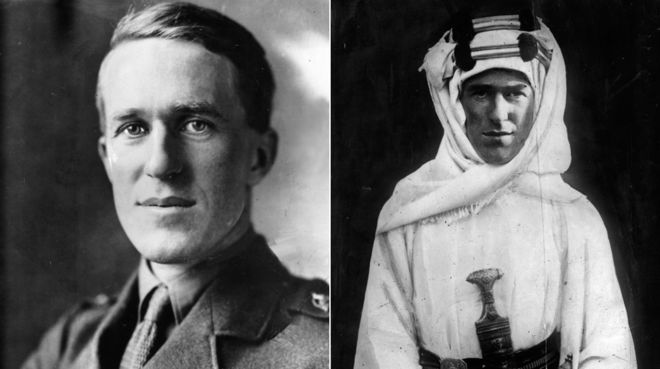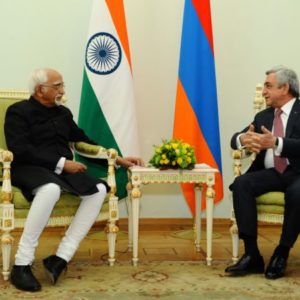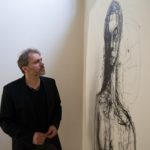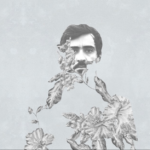This short book offers an overview of T.E. Lawrence’s dynamic life. It consists of 160 pages and is made up of nine chapters. It is enriched with beautiful illustrations of people, places and animals.
As Brown notes, Lawrence was an extraordinary person with great achievements. He describes him as a multi-talented person, as a writer, an archaeological excavator, a sportsman mainly a cyclist, and a photographer. He was also regarded a British intelligence agent, a diplomat, and a political advisor to Winston Churchill.
The book relies extensively on Western sources; the memoirs of British officers such as General Clayton, Colonel Joyce as well as Lawrence’s Seven Pillars of Wisdom, personal letters and materials published in the Arab Bulletin during the wartime period. The book throws light on the various stages of Lawrence’s life pointing out to his family background, his education and wartime activities.
Lawrence was born out of wedlock. He was suspected of having homosexual and masochistic inclinations. The poem appearing in Seven Pillars of Wisdom is rumored to have been to a certain Sheikh Ahmad (Dahoum) from Syria.
After his participation in the First World War as a military and a political advisor to Emir Feisal, the third son of Sharif Hussein, Lawrence became a legendary figure. Hence, he was famously known as Lawrence of Arabia.
His interest in crusader history and archaeology allowed him to enter the Ottoman-Arab lands in the years preceding the war. During his years of study at Jesus College at Oxford, he was given the chance of participating in archaeological field work that was of great benefit to him in his future political career and intelligence.
Lawrence was a well-travelled person having visited Mont St. Michel, Athens, Constantinople, Cairo, Damascus, Aleppo, Latakia and even Jubeil. In 1910, he excavated the ancient Hittite city of Carchemish under the guidance of famous British archaeologist D.G. Hogarth, who was the Keeper of the Ashmolean Museum. Hogarth also became the director of the Arab Bureau, where Lawrence also began working.
Lawrence acquired some knowledge of Arabic and familiarity with the geography of the Arab region. He had also acquaintances with the locals and regarded himself as an Arab during his stay in the Ottoman territories long before 1914.
Lawrence received military education since his early youth at the Royal Garrison Artillery in Cornwall and then the University’s Officers’ Training Corps. He also gained further military training under Captain Stewart Newcombe, whom Lawrence assisted in a spying mission while excavating a site in Sinai with archaeologist Leonard Woolley.
After the outbreak of the Great War, archaeologist Lawrence joined the Intelligence Department in Cairo. Then, upon the declaration of the Arab Revolt in June 1916, he was asked by the Arab Bureau to go to the Hijaz in order to assist Sharif Hussein of Mecca in leading the rebellion, while at the same time, reporting the on goings of the war to Cairo. This event greatly transformed his life.
Brown suggests that Lawrence was a zealous supporter of the Arab cause. He wanted to spread the Arab Rebellion throughout Syria and not only limit it to Arabia and strived to see the creation of an independent Arab state.
Lawrence mainly collaborated with Emir Feisal and upon his request he dressed up like an Arab and adapted himself to the desert conditions. In that shape, he was welcomed by the nobles of Hussein’s royal house. It was striking to see that Lawrence in his report to the Arab Bureau Office described Feisal as being similar to King Richard the Lionheart.
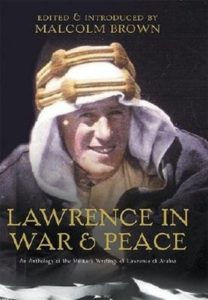
Brown attributes all Arab successes during the war to T.E. Lawrence. He states that it was Lawrence who taught the Arabs various warfare techniques. The author supports his claim by quoting sections from Colonel Joyce’s account, in which it was stated that Lawrence was able to persuade the senior Arab leaders to accept his plans and apply them as they were.
The takeover of the Aqaba port is still a hotly disputed topic in history. Some consider that it was the Arabs’ initiative, while others believe that it was achieved through Lawrence’s wisdom and plans. However, one should not neglect the fact that the Arabs also contributed to the British success, because they were able to make it difficult for the Ottomans in accessing the means of communication through blocking the Hijaz Railway and destroying numerous military trucks.
According to Brown, Lawrence was also a caring person living a miserable and distressful life during the war. He was afraid of Arab disloyalty, because he promised the Arabs for independence on one hand, while his masters were signing the Sykes-Picot agreement with the French that aimed to divide the Arab lands between the two powers. In his diary, Lawrence wrote: “we are calling them [the Arabs] to fight for us on a lie, and I can’t stand it.”
The Balfour declaration in November 1917, was another major challenge for Lawrence. He was asked to secure the Arabs’ commitment to the British war effort at the Palestine front, while, the above-mentioned document was promising the creation of a Jewish national home in Palestine.
As we understand from Brown’s book, at a later stage of his life, Lawrence nursed a guilt complex for having played the role of a deceiver during the war. During the post-WWI period, he was highly publicized and constantly appeared in the British news headlines, which seemingly frustrated him and drove him to keep a low profile. He passed through an identity crisis and continuously changed names throughout the last stage of his life. For example, upon being enlisted in the British Royal Air Force, he called himself John Hume Ross. After which he became known as Thomas Edward Shaw.
Lawrence lived in a struggle with his past. He did not want to recall war memories and he even rejected his former wartime colleague’s request in having lunch with his old friend Feisal, then the king of Iraq, who was visiting Britain. He also stated that the old Lawrence was dead.
In addition to his archaeological and military life, Lawrence was also a great writer, authoring several books including the Seven Pillars of Wisdom, Revolt in the Desert, Mint and translating Homer’s Odyssey as well as the Forest Giant from French into English. He was also close to many prominent writers including John Buchan, Bernard Shaw, Thomas Hardy and others.
The famous “uncrowned king of Arabia” died on May 19, 1935 at age forty-six due to a motorcycle accident, which is suspected of having been a suicidal act. However, Lawrence remains an important hero for the British and large number of people continue visiting his shrine every year.
Brown’s T.E. Lawrence is an easy-to-read book that provides sketches of Lawrence’s biography. It delves into the various aspects of his life until Lawrence’s exotic and phantasmal death. By reading this book, one can clearly see that T.E. Lawrence led a difficult, adventurous and a burdensome life.
Bedros Torossian is a senior undergraduate History student at the American University of Beirut. Late Ottoman educational life lies within his area of research. He has recently published an article called “Roles of Turkish and American Orphanages in Influencing Armenian Identities” in Haigazian Armenological Review in 2016. “


